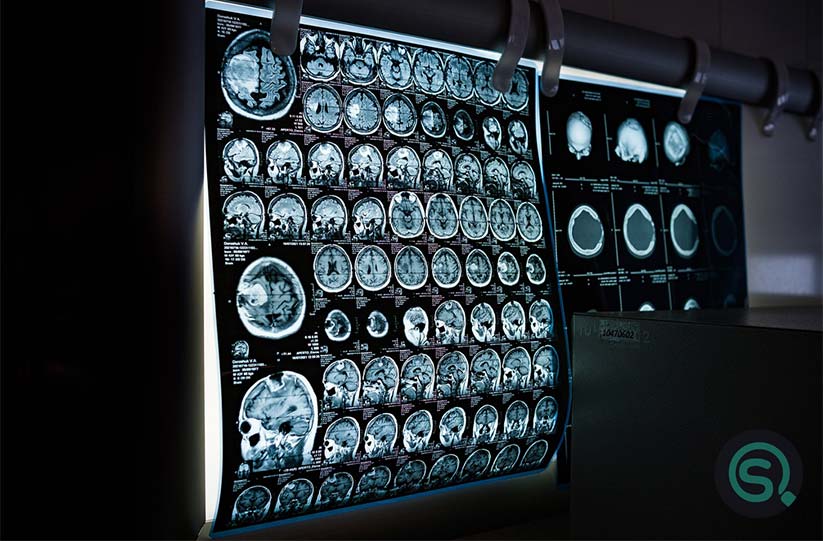Do you ever wonder how fast a human can think? The human brain is a mysterious, complex but wonderful thing to study about. Even though we all are the same species, every person's brain is unique in a way. That is why understanding the speed at which our brains operate is not as simple as it seems to be.
What does it mean by 'think fast'?
What exactly does it mean to "think fast"?
- Is it about fast decision-making ability,
- Proficient and quick problem-solving ability or
- Fast responses to stimuli?
These are not interchangeable concepts; each represents a distinct process of our cognitive abilities.
Decision-making ability
Imagine a scenario: You're driving a car, and suddenly, someone steps onto the road ahead. You have to make an instant decision. Let's say you decide to hit the brakes immediately. Let's break down what are the steps your body has to follow to make that decision.
- Your eyes capture the person crossing the road and this acts as the input signal.
- This has to travel to your brain through the optic nerve.
- Then your brain (Occipital Lobe) has to process that signal,
- Then the brain has to analyze all the data and has to make a decision
- Then the brain has to send a signal to the muscles in the leg and, your foot hits the brakes.
The time it will take to take this action is known as 'brake reaction time (BRT)'. According to studies conducted by 'BIH,' the average BRT is around 1 second.
This example will help you to understand our brain's ability to make fast decisions in critical situations.
All the decisions we make won't take a similar time to process. They are controlled by completely different factors from each other. They all can vary from each other.
Problem-solving ability
Problem-solving is another way to get an idea about the thinking speed of a human. Some people are great at problem-solving and some are not good at it.
For example, mathematics is all about problem-solving. When considering a maths problem that has average difficulty, some can solve it with just their minds instantly. Others take time and maybe need paper to find the solution.
As another example, the world record for solving a Rubik's Cube (3×3×3) stands at a mere 3.13 seconds, a piece of evidence of the extraordinary problem-solving abilities some possess.

We have to realize that problem-solving is not only about mathematics but it is a general example. From we can realize that every person has a different capacity to think.
Response time
Now, let's talk about response time: how quickly our bodies react to external stimuli.
Computer gaming is one place that can get a good idea about the response time of humans. According to Nvidia (a technology company known for its GPU manufacturing), the average response time of a talented gamer is around 150 ms.
There are many stimuli such as sight, smell, pain, touch, taste, and sound that trigger responses in our bodies. But those signals don't transmit at the same speed.
According to many studies, the average response of a human to a stimulus is around 250ms.
Brief explanation of the transmitting the signals in our body
Let's think of the human body as a simple system. We have inputs, a processing unit, and outputs.
Sensory organs (eyes, nose, skin, tongue, ears) act as inputs, the central nerve system (brain and spinal cord) acts as processors and muscles act as outputs. The peripheral nervous system connects the inputs and outputs to the central nervous system. There are other systems such as the endocrine system that are involved in this process but we don't need to go that deep in this discussion.
When sensory organs detect a signal they are sent through nerves to the central nervous system. Then after they are processed, the response signal is sent to the location that has to produce a response. When we are talking about the speed of thinking, the speed of nerve transmission is the key.
There are three types of nerves in our nervous system.
- Sensory neurons - Located between sensory organs and the central nerve system
- Interneurons - Located in the central nerve system
- Motor neurons - Located between the central nerve system and various downstream targets (Muscles, organs, etc)
Neuronal transmissions occur at speeds ranging from 50 to 150 meters per second.
Many studies have been conducted to explore brain activity through technologies such as MRI scans. There are great tools to study the different processes that happen in different brain regions.

Relationship between intelligence and speed of thinking
How does intelligence affect the speed of our thinking? Surprisingly, recent research suggests a complex relationship between intelligence and thinking speed. Studies conducted at the BIH and Charité – Universitätsmedizin Berlin revealed interesting results. While individuals with higher IQs have provided quicker responses to simple tasks, they took longer to solve more challenging problems than other participants with lower IQ levels.
The researchers determined that this happened because brains with reduced synchrony between brain areas, "jump to conclusions" quicker without completing the processing steps that are crucial to the final results. Even though high IQ participants required more time to solve the problem but made fewer errors.
What will affect the speed of thinking?
Factors like age, sex, and health conditions will make a direct impact on the speed at which our minds operate. These variables shape and mold our cognitive abilities, influencing the pace at which we process information and respond to stimuli.
So how fast a human can think?
From this brief discussion, we learned that the brain of every human operates differently from one another. All of us process information differently. When someone takes a fraction of a second to process the information, some other person can take a few seconds to more than minutes to process the same information.
For some scenarios, studies have been conducted using a diverse population and data was obtained for them. (I have mentioned some of them above). From those data, aspects such as average response times have been determined for those specific scenarios. So when comes to this question even though we have benchmarks and records, there are exact answers.
References
Human Nerve Conduction Velocity (NCV) - med.libretexts.org
Speedy Science: How Fast Can You React? - Scientific American
Intelligent brains take longer to solve difficult problems - Berlin Institute of Health
Imaging a brain thinking, using a new MRI technique - National Institute of Biomedical Imaging and Bioengineering (NIBIB)
Seeing brain activity in ‘almost real-time’ - The Harvard University
Image credit
The cover image was designed using an image by Pexels from Pixabay
Image 01: Contains an image by Alberto Adán from Pixabay
Image 02: Contains an image by Dmitriy Gutarev from Pixabay










Share your thoughts